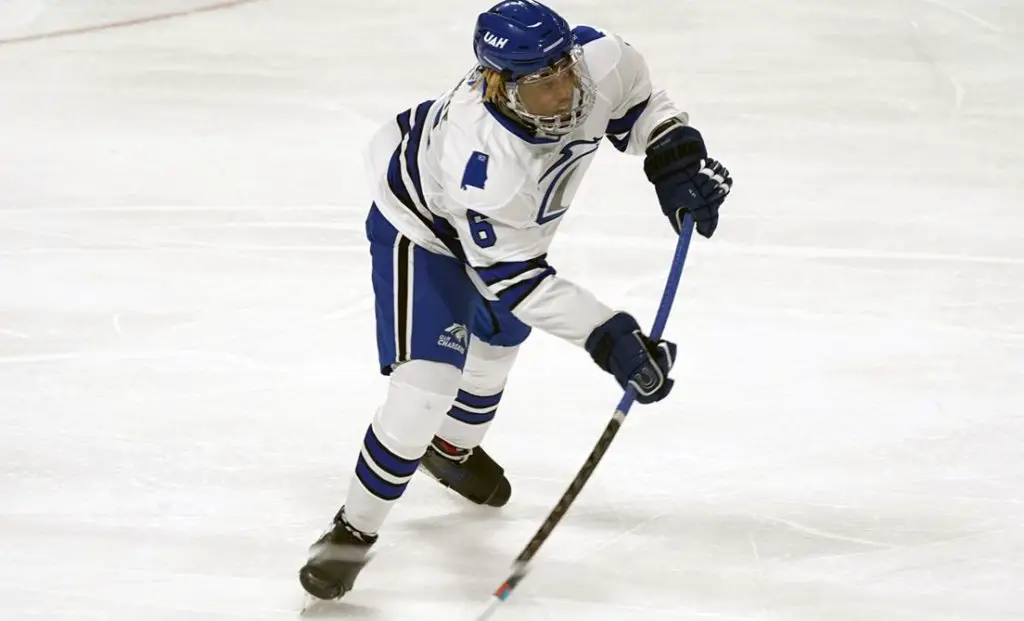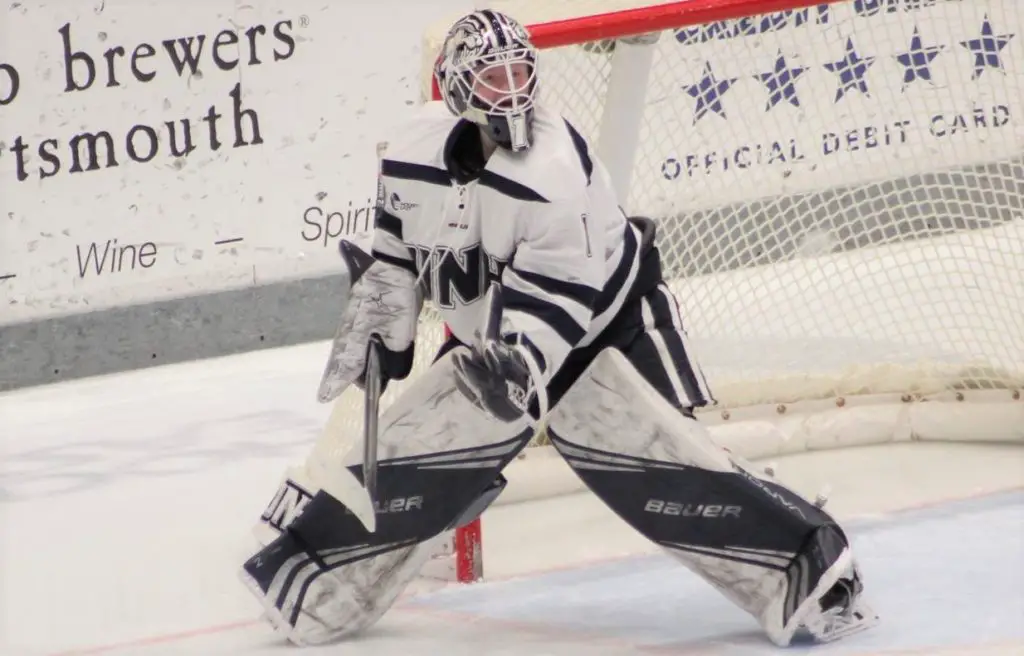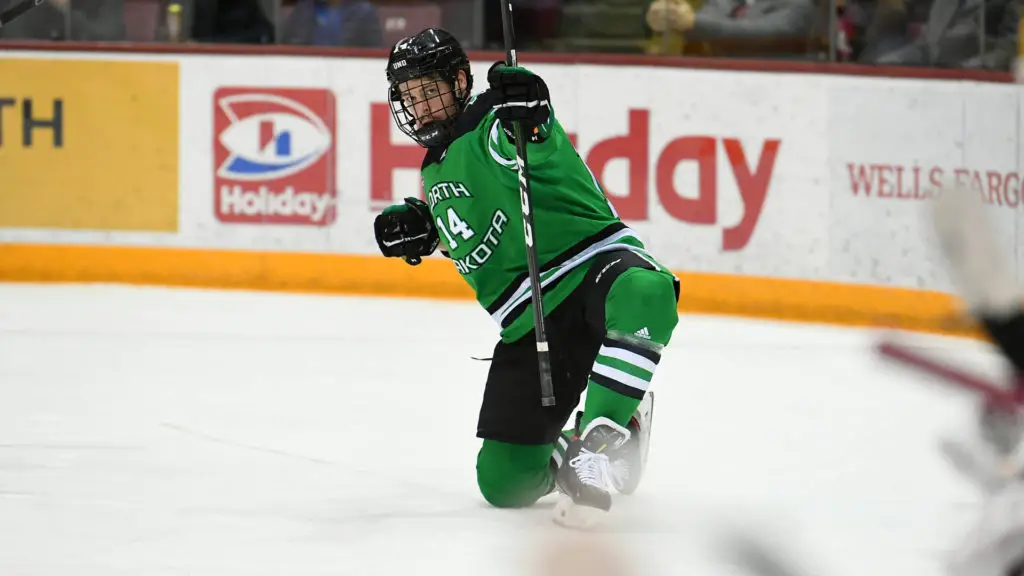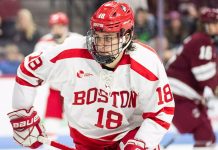
The romantic image of hockey centers around the notion of the sport as an engine.
Teams can’t win unless they harness the selfless power of individuals, and victory only comes when they work together to control the flow of the game. An unmatched intensity creates this willingness to do whatever it takes to win.
It fosters a bottomless toughness capable of enhancing teamwork, friendship and lifelong bonds. That attitude spills over into the community and helps the sport shine through its brightest moments. This off-ice gentleness can welcome anyone into the inner circle by appreciating what it takes to sacrifice daily for a team.
At its best, hockey permeates that mentality, but the truth is that more sinister aspects exist in the shadows of the game. The same culture and attitude that makes hockey the greatest sport in the world is also capable of excluding others with hostile language, and players, fans, coaches and personnel can feel unwanted or afraid to speak up.
For that reason, college hockey is responding through the racial and diverse awakening of the past year. The College Hockey for Diversity, Equity & Inclusion initiative introduced last week is the agent of that intention and is aimed at eradicating the negative sides of the game “one shift at a time” with the support and coordination of all 11 Division I hockey conferences across both genders.
“I wanted to be a part of this group because, at the end of the day, hockey needs to be for everybody,” said Bemidji State freshman Tina Kampa. “I don’t think it’s a secret why we chose to create a group like this, but hockey culture needs to be a place where people from all walks of life feel accepted, and valued representation matters.”
The initiative arose from the racial reckoning across America following last summer’s murder of George Floyd. The ensuing conversation was uneasy, but commissioners across college hockey expressed a willingness to unite and create a mission reflective of their game. The platform eventually evolved to include a conglomerate of commissioners, coaches and players across every league.

“I was numb inside because it happened so often that you just got used to it,” Alabama Huntsville freshman Ayodele Adeniye said. “I couldn’t watch it more than once because it was circulating everywhere, and it was upsetting me. That’s never a good way to be, so when I heard that this group was going to start, I wanted to be a part of it. I wanted to be an act of change to what I want to see in the world.”
“We’re proud, at least to be at this point,” said Jennifer Flowers, VP and women’s commissioner of the WCHA and chair of the committee. “I think success that a year from now for this group and for our sport is that everyone’s having the conversation on their own and not being forced to or pushed into it, that it’s more real. We’re in a real place of recognizing that we’re all part of this, we’re all part of a solution, and we need everyone in our sport to be part of this solution.”
That means the group isn’t just solely dedicated to one piece of the larger conversation. Hockey itself is recognized as a homogeneous, male-dominated sport with the negative image stemming from a permeating, toxic locker room culture. The athletes who met with the media all pointed to internal comments at a racial, sexist and homophobic level as being similar-and-different components that they were uncomfortable with, and it drove them to join up to express a way to remove those elements from the game forever.
“It’s just everything,” Adeniye said. “The biggest thing is just locker room culture. As you touch all of it, you can go into a locker and just hear stuff. That’s just the way hockey culture is, and you sometimes (are shocked) that someone just said something. It’s a culture that’s just not where it needs to be, which is diverse and unifying and including anyone.”
Each student that met with the media brought their own unique perspective to the call. Each is a piece of the inclusion and changing face of hockey but shared experiences of exclusion from within the game. Adeniye, for example, is a Black defenseman introduced to the game through the NHL’s Diversity and Inclusion program and grew to play hockey in Columbus, Ohio, a market only introduced to professional hockey in the 21st century, while New Hampshire sophomore Nikki Harnett represented the LGBTQ+ community.
“Before I started playing ice hockey, I was out playing in street hockey tournaments,” Adeniye said. “We’d actually get all of the rec centers in Columbus in the inner city together, and we’d have a giant street hockey tournament every year. The winners got tickets to the Blue Jackets games, so being able to grow the game that way, getting kids interested to at least experience hockey, you want to put a stick in a kid’s hand so they will have a good time and be interested enough to go at least learn how to skate or go to a game.”
“I really want to work on changing locker room culture,” Harnett said. “I play women’s hockey now, but I grew up playing men’s hockey and boys’ hockey, and I know what goes on in those locker rooms. I want our culture change to be so deep that it changes what people talk about when people think nobody’s listening. (It’s) education, education, education. That’s how you create change.”
The unique individuality is something the hockey diversity initiative hopes to celebrate while immersing itself in the fabric of the college game. It seeks to grow the game by attacking and stamping out the problems from within and will act as the agent of that growth. It’s not an overnight process nor is it automatic, but the lessons taught by the more than two dozen people who stepped up to the plate will ultimately help include more to break down those walls with unstoppable momentum.

“It’s about sparking conversations,” North Dakota junior Jasper Weatherby, who knelt during the national anthem during NCHC play in the early-season pod, said. “That (act) was about a young kid maybe asking his dad (about what we were doing) and then having an honest conversation. I’m proud of everyone else who has to kneel, and we live in America. That is your choice, and that’s the beauty of this country.”
“I was walking into the rink against (Minnesota State) on (Thursday), and one of their assistant coaches was looking at me weird,” Adeniye said. “I was just looking back and wondering what he was looking at, but then he actually came over to me and told me he was super excited. He thanked me for it and told me he has a nine-year old adopted African American son. It was cool to be able to know that other people are supportive of what we’re doing and that you can see that other people want to see the change as well.”


